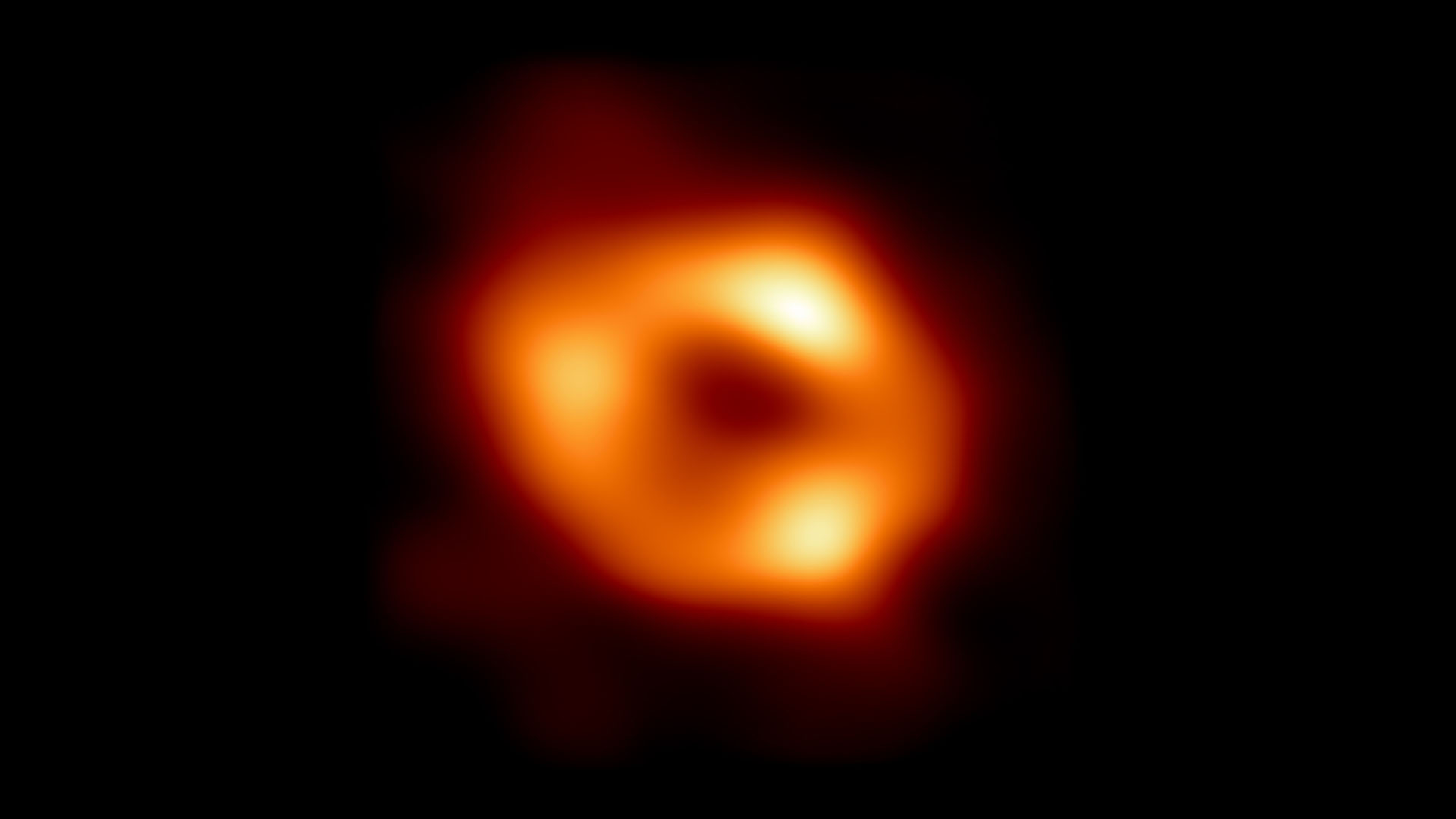
Something near the supermassive black hole at the heart of the Milky Way has been firing regular blasts of high-energy gamma-rays toward Earth, and scientists may finally know what it is.
In new non-peer-reviewed research posted to the preprint server arXiv, a duo of astrophysicists at the National Autonomous University of Mexico conclude that the bursts of radiation are emanating from a blob of gas spinning around the black hole at almost one-third the speed of light. The team's findings may solve a mystery regarding the Milky Way's central black hole — formally named Sagittarius A* (Sgr A*) and located around 26,700 light-years from Earth — that has perplexed astronomers for two years .

The gamma-ray radiation pulses from around Sgr A* were first detected belting Earth in 2021. The team behind the observation knew that the radiation couldn't be coming from within the supermassive black hole itself, however.
That's because all black holes are bound by a region called an event horizon, which marks the point beyond which nothing, not even light, has the velocity needed to escape the black hole's immense gravity. This means black holes don't emit radiation themselves, so the gamma-rays must be coming from the environment of Sgr A*.
Other supermassive black holes are known to emit powerful radiation from their immediate surroundings when their gravitational influence generates turbulent conditions in surrounding gas and dust, forming a structure called an accretion disk. As black holes feed on this matter, the accretion disk emits light that spans the electromagnetic spectrum, from low-energy radio waves to high-energy gamma-rays.
This can't account for the gamma-rays from Sgr A*, however, as the Milky Way's black hole is surrounded by very little matter and is feeding so slowly that it would be equivalent to a human living on a diet of one grain of rice every million years, according to University of Arizona astronomer Chris Impey, who was not involved in the research.
Using data from the Fermi Gamma-ray Space Telescope collected between June and December 2022, the researchers aimed to discover the origin of these gamma-rays.
The duo searched the publicly available Fermi data for patterns of periodicity in the gamma-ray emissions. They found that the pulses emerge from close to Sgr A* roughly once every 76.32 minutes. This period of emission is half the time between pulses of X-ray radiation also seen coming from the vicinity of the Milky Way's supermassive black hole, suggesting the two emissions are in harmony and are likely related.
"The coincidence of the multiwavelength periodicity in X-ray and gamma-ray points towards a single physical mechanism that produces it," the team wrote in the paper.
This revelation of what the researchers call a "unique oscillatory physical mechanism" led them to conclude that both the gamma-rays and the X-rays are being emitted by a "blob" of gas that is swirling around Sgr A* at around 30% the speed of light — or around 200 million mph (320 million km/h). They think this speeding lump of matter is emitting light across several wavelengths of radiation as it swirls around Sgr A*, flaring periodically as its orbit proceeds.
The discovery could give scientists a better understanding of the environments around supermassive black holes, particularly less-ravenous examples, such as the one at the heart of the Milky Way.







